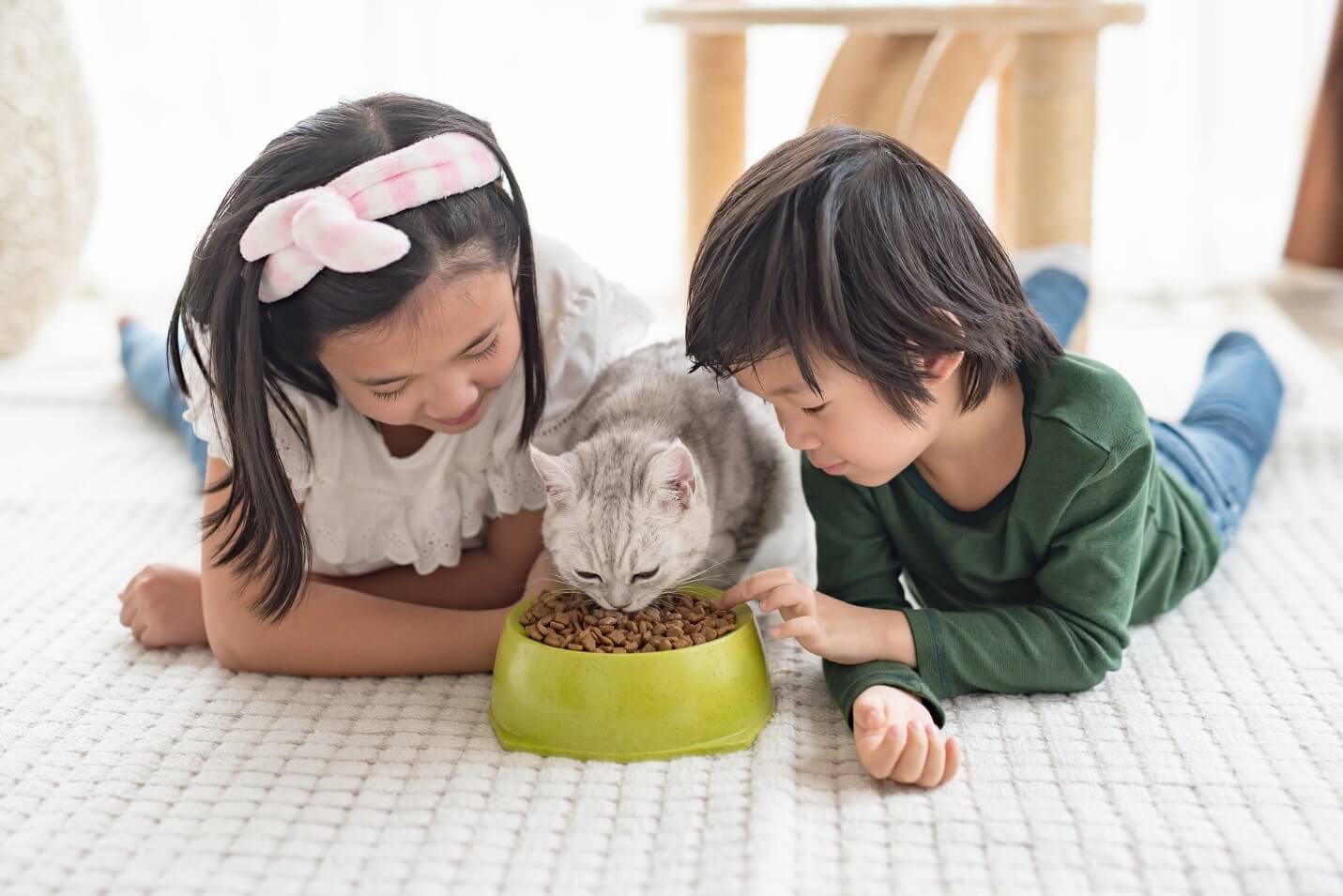Highlights:
2022 trends in pet food include:
- An increase in premium pet food sales
- Pet food made with functional ingredients such as hemp
- Pet food with environmental and ethical claims

Both pet ownership and pet food launches have been growing globally due to the pandemic. Emerging pet food trends offer insights into how pet owners’ interest in healthy, sustainable pet foods is reshaping the category.
2022 trends in pet food include:
Around the world, pet ownership rose in response to COVID lockdowns as people chose to adopt a pet to keep them company at home. Data from the UK illustrates this trend. While 54% of UK adults owned a pet in May 2020, by May 2021, the number had risen to 57%.1 29% of the pets adopted went to households without any other pets, while 71% joined households with pre-pandemic pets.2
This increase in pet ownership (which included many first-time pet owners) has helped support recent growth and innovation in the pet food category. The number of new pet food launches in 2020 grew 1.3% globally over the prior year, with the largest share (7.4%) launched in the US.3
Just as people have been focusing on preventative health measures for themselves throughout the pandemic, they have also shown a high awareness of the importance of preventative health in general for their pets. In the US, a whopping 88% of pet owners say it’s important to take preventative measures to protect a pet’s health.4 In fact, health is a major theme emerging in pet food trends.

Looking ahead, there are strong signs that the pet food category will continue to follow popular trends in the food industry into 2022. Here are the top three standout pet food trends to watch for:
Premium pet food is in demand by a growing number of pet owners. One indicator is the rapid increase in new product launches of all-natural pet foods, which rose 41% between 2016 and 2020.5 While all-natural pet food accounts for only 9% of the global market,6 its popularity is high in North America, just ahead of Europe.7 In the US, more than one in three pet owners look for all-natural pet foods.8
High quality is another aspect of premiumization. This might include pet food with meat as the main ingredient, the absence of animal byproducts, or only human-grade ingredients. 75% of US purchasers of pet food or treats agree that it’s worth paying more for higher quality pet food.9 The use of short ingredient lists is another way brands are emphasizing a product as a premium one.
Another important trend to watch is pet foods with functional benefits. Exciting innovations in this area are coming out of Asia Pacific, in particular, China and South Korea—countries known for embracing functional ingredients in food and beverage. New cat and dog food launches have included ingredients ranging from probiotics to collagen to flaxseed with claims for immunity, digestion, joints, and skin/coat support.
The US is another market with growing opportunities for functional pet foods (as well as treats, toppers, and drinks). Among US purchasers of pet food or treats, health benefits they would most like to see are healthy digestion (55%); muscle, joint, and bone support (51%); skin/coat health (46%), and immune system support (45%).10 Heart health, weight management, and anxiety relief are of interest to about one in three.11 Functional ingredients in US launches have included nutritional yeast, beta-glucans, coconut oil, MSM, hemp, turmeric, and cinnamon.

Pet foods that can claim sustainability benefits are also trending. Globally, 21% of new pet food launches in 2020 featured environmental or ethical claims, up from 19% in 2019 and 16% in 2018.12 Younger pet owners are expected to continue to drive this trend.
Sustainability claims among recent US pet food and treat launches have included plant-based, vegan, non-GMO, pasture-raised, free-range, and wild-caught. Some brands are also incorporating sustainable alternative proteins like spirulina and crickets. More sustainable packaging—for example, recyclable or made with partially renewable materials—is another approach being used to appeal to pet owners.
Addressing pet owners’ preferences for healthy and sustainable pet foods will become increasingly important going forward. Not only can products that meet these criteria make pet owners feel good about their purchase, but they can also help build trust and encourage brand loyalty—especially when pet owners feel a brand’s values are aligned with their own.
For pet foods that will resonate with today’s pet owners, explore our animal and pet solutions, which include essential micronutrients, sustainable proteins, plant-based pet solutions, and more!
The six essential nutrients for dogs are carbohydrates, protein, fat, vitamins, minerals, and water. Carbohydrates provide glucose, which is used for energy, and fiber, which supports a healthy gastrointestinal tract. While protein and fat also provide energy, they have additional essential roles in a dog’s nutrition.
Protein delivers the 10 essential amino acids dogs need to maintain the body’s functions and structures (such as muscles, skin, and nails), while fat provides essential fatty acids that help absorb fat-soluble vitamins, produce hormones, and more.
Dogs also require a number of vitamins and minerals, in very specific amounts. Water is the most important nutrient of all—dissolving and transporting nutrients, regulating body temperature, and allowing chemical reactions to take place.
There are no specific ingredients that are the best for cats. Many different ingredients may be used in cat food, but what ultimately matters is the nutrient content.
A commercial cat food formulated according to the nutrient profile specified by the Association of American Feed Control Officials (AAFCO) for the relevant life stage will meet all of a cat’s nutritional requirements. These include certain nutrients not required in dog food such as arachidonic acid, biotin, and taurine.
The Association of American Feed Control Officials (AAFCO) has determined minimum dog food nutrient profiles for two different stages of life: “growth and reproduction” and “adult maintenance.” In most cases, the nutrients required are the same at both stages, though the amounts are often higher during growth and reproduction due to greater nutritional demands.
The nutrients dogs need, according to the AAFCO, are protein and the specific amino acids arginine, histidine, isoleucine, leucine, lysine, methionine, methionine-cystine, phenylalanine, phenylalanine-tyrosine, threonine, tryptophan, and valine. Dogs also require fat and specific fatty acids linoleic, alpha-linolenic, eicosapentaenoic, and docosahexaenoic acids.
For minerals, the AAFCO specifies that dogs need calcium, phosphorous, potassium, sodium, chloride, magnesium, iron, copper, manganese, zinc, iodine, and selenium, while the essential vitamins for dogs are vitamin A, vitamin D, vitamin E, and the B vitamins thiamine, riboflavin, pantothenic acid, niacin, pyridoxine, folic acid, and vitamin B. Choline is also an essential nutrient for dogs.
A complete and nutritionally balanced diet for a dog should include all of these nutrients daily. However, some of these nutrients (such as fat-soluble vitamins) can be stored in a dog’s body for later use.